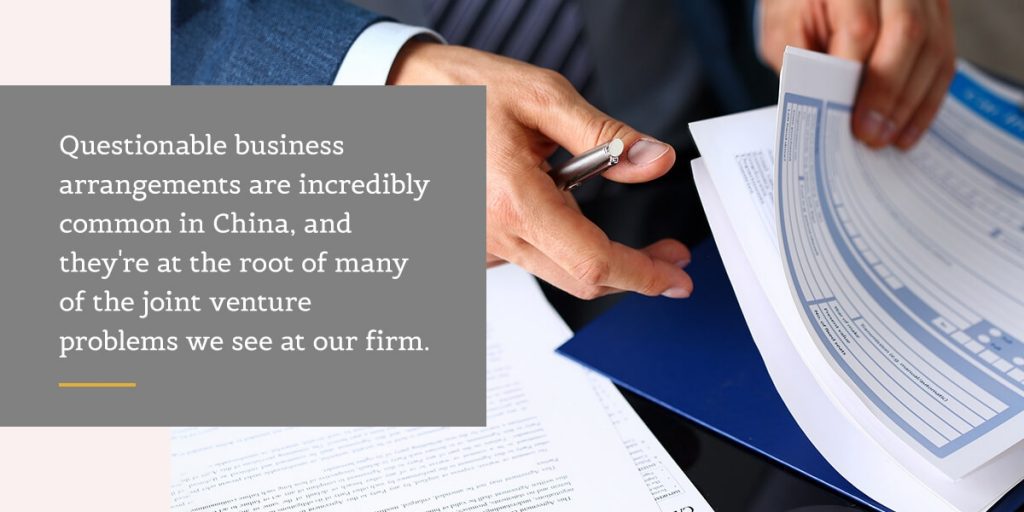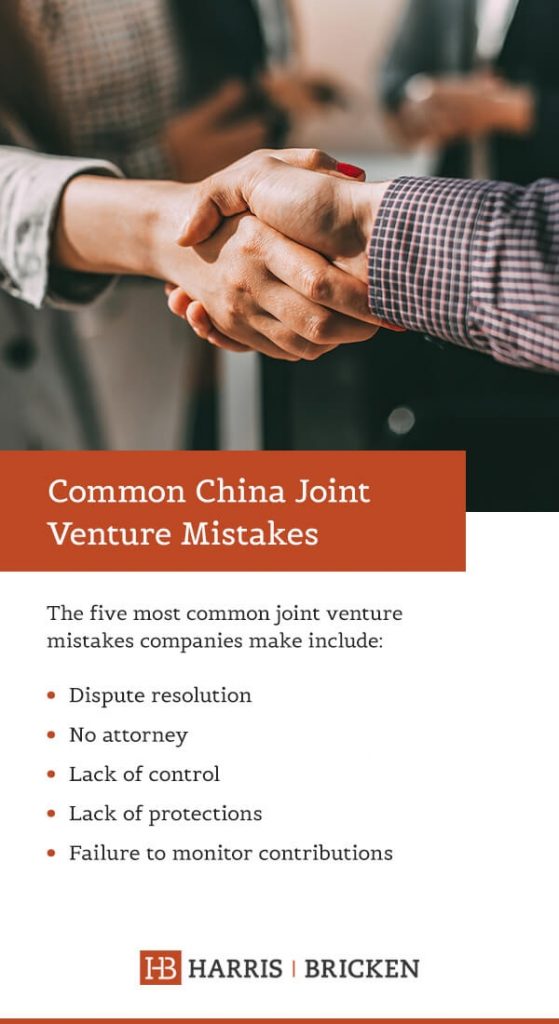
IT Outsourcing Service it 外包服务 and Big Project Joining 大项目加盟
IT Outsourcing Service:
China IT industry and software sector per city and region
Over the last two decades, China’s IT industry has experienced impressive growth and has become a key industry in the country’s overall economy.
China is planning to make IT as one of the seven strategic industries that will help the country become a world-class, innovation driven, and high-tech society, moving from a cheap-labor manufacturing outsourcing.
Over the past years, China has already seen creative and innovative developments in the sector, stimulated by foreign investors and many (small) domestic private players.
The four sub-sectors of the Chinese IT industry and software sectors
China’s IT industry is large and complex, covering a wide range of product, companies, and subsectors. The country is considered the manufacturing hub of the world’s most electronics.
Globally, China has the most internet users. Today it has above 900 million users, rising from a mere 22 million in 2000. There are also a billion users of mobile phones, and users of social network and smartphones continue to rise exponentially.
In terms of spending, China’s IT market is the fourth-largest market around the globe, after the US, Japan, and Germany. According Business Monitor International, the country has invested a total of 104.5 billion for the industry. Currently, it ranks as second largest software-outsourcing destination next to India. The IT industry of China is expected to grow by 15 per cent annually over the next five years.
The four main areas of the industry are:
- Telecom, but this subsector is a “restricted” industry. Foreign participation is only allowed through Joint Ventures with dominant Chinese players—often large SOEs or private companies that have strong ties with the government.
- Hardware, being a “mature” market, the hardware market is “not restricted.” The hardware market has small margins and constant pressure on prices and profits.
- Software, and
- IT services.
The last to sectors are those where also foreign companies can find their way, although it is advised to find a Chinese partner to work with.
China internet statistics and IT industry growth
China is the country with the biggest population in the whole world. With an estimated 1.5 billion people, China is a nation with large consumer consumption rates. Market research shows immense opportunities for foreign players to establish almost any type of business in the country.
Popular Chinese websites and/or applications
According to Erik Crouch, “The country is a downloading, WeChatting, ecommercing powerhouse.” The huge number of internet users in the country demand more Chinese websites and applications for browsing and online buying.
Here are some interesting statistics related to application usage in China:
- Didi Kuaidi is an alternative application for Grab a Cab. In less than a minute, there are roughly 1,388 cabs hailed and 2,777 private cars hired.
- About 395,000 log-in on WeChat in a minute.
- More or less 625, 000 Youku Tudou videos are watched in 60 seconds. (Youko Tudou is the most watched video site in China).
- Every 60 seconds, around 700 people buy from online shops such as Alibaba.
- Around 1.1 million dollars is earned every second via mobile buying. During Single’s Day, that number multiplied nine times (ie: USD 9 million).
Thus, China’s e-commerce and internet marketing provide various opportunities for foreign entrepreneurs to invest in. In the years to come, with continual advancement in technology, we see further development and opportunities in this sector.
Opportunities in IT in China
China is aiming to become an innovative leader in the field of IT. Today’s hot topics in China include next-generation mobile communications, next-generation Internet equipment, smart devices, Internet of Things, cloud computing, and new displays. In view of this, China is welcoming of foreign investors that have expertise in this field and have cutting-edge technology.
Large investments have already been thrown into the IT industry of China for the development of IT technologies. For instance, in a recent report by KPMG, China Mobile plans to spend USD 52 billion to expand cloud services. The development in the IT industry can also serve as a strong foundation for other sectors such as finance, healthcare, logistics, etc.—all of which are willing to pay premium prices for high quality products.
Still, China has to make sure that it educates its Chinese clients before they can fully embrace the IT solutions that foreign companies are offering.
China’s software industry and IT services per region
China is keen on developing its IT industry and aims to become a hub for IT outsourcing. China is now at 36 in the rankings by The Global Information Technology Report, released by World Economic Forum.
To achieve this, the Chinese government has designated 20 cities as China Outsourcing Model Cities including Beijing, Shanghai, Dalian, Shenzhen, Tianjin, Hangzhou and Wuxi. These cities are home to the major outsourcing companies and IT services.
China is leveraging its low labor cost, large supply of human resources and widespread high-quality telecommunications infrastructure. Because of the rising labor cost, particularly in the China Outsourcing Model Cities, there will be a high tendency that outsourcing will focus further on the more high-end of the market.
Guangdong
Guangdong is an important manufacturing center of electronic and information products, with industry giants Huawei and Foxcom.
In a recent report by Reuters, Guangdong Shenglu Telecommunication Tech Co Ltd plans to issue over 50 million new shares. It will also pay 52.50 mln yuan cash to 34 individuals for 100 pct stake in a Nanjing-based technology company. The transaction costs 750 million yuan. The proceeds will be used to acquire stake and business integration.
Jiangsu
Jiangsu province gives focus on ICT as one of its ICT industry. The growth of the IT industry in the province has been remarkable. The capital of Nanjing is one of the top destinations for software development and service outsourcing in China. Since Nanjing is home to 3 academic centers in China, it enjoys the benefits of a huge young and educated workforce.
Shanghai
As Shanghai aims to become a world-class financial and shipping center, it will need to invest in areas such as energy-efficient data centers, cloud computing, mobile Internet, advanced software and supply management systems.
ICT development zones and industry parks are situated in Pudong District and Yangpu District. Shanghai Cloud Computing Industry Base—established in Shanghai Shibei HighTech Park in Zhabei District—will build the first domestic commercial public platform of service based on cloud computing.
Shandong
China Ministry of Industry and Information has honored Capital Jinan as “China’s second Software City” after Nanjing in 2011. Outsourcing, software development, and cloud computing—these are Jinan’s strong ICT subsectors.
One of Jinan’s advantages is its pool of talents build around 50,000 graduates from its universities and institutes in the field of software development, computer technology, and finance.
Compared to Beijing and Shanghai, costs are a third lower in Shandong. Also, employee loyalty in Shandong is less than 5%, which is lowest in China, compared to 25% nationwide.
Zhejiang
Hangzhou, the capital of Zhejiang Province, has key drivers of economic growth in creative industry, e-commerce, software, IT services and Internet of Things (“IOT”) industry. Serving as the “Capital of e-Commerce” in China, Zhejiang accounts for more than half of the total revenue for e-commerce services in the country. For instance, Chinese online shopping giant Taobao has processed RMB 20.83 billion of payment in 2009, making it a giant of retail platform in Asia.
Tips for investing in China
There are some points that prospecting investors in China should be mindful of:
- First, they should focus on small niches where they can leverage their technological expertise.
- Secondly, the company should make sure that knowledge and solutions should be adjusted to the unique needs and characteristics of the local market.
- Third, IT services are required in various geographical locations by many enterprises to provide reliable services throughout China.
- Lastly, a brand name that will be internationally recognized can be a significant aspect in the final decision for Chinese clients.
E-commerce study mission to Beijing and Shenzhen
In September 2015, Alliance experts successfully co-organized a delegation of 30 small and medium-sized Singapore enterprises for a China E-commerce Study Mission.
In this 5-day study trip, we visited 11 companies which are either in E-commerce platforms or E-commerce service providers, this includes, Tencent, GOME, SF Express, Hercules Logistics, Chinese Wangku, etc. All visited companies warmly welcomed the delegation, and generously shared their experience on E-commerce, while communicating and discussing.
Wangku visit
Wang Haibo, CEO of Chinese Wangku, introduced us the development history & strategic layout of Chinese Wangku. In the 16 years of history, Chinese Wangku firmly grasped the Internet and e-commerce era of high-speed development opportunities, persist in serving small and medium-sized enterprises, continue to innovation based on customer and market demand, finally win the trust of customer and and markets, and is becoming leading domestic e-commerce platform based on SKU supply chain in China. This kind of e-commerce business promotes China’s B2B e-commerce industry to a new era. Read more about Chinese Wangku official report here and here.
E-guan visit
Yanghui, General Manager of E-guan Education Internet+ Consulting Service Center, shared several topics on China’s e-commerce development, enterprise transformation for Internet, and talent training with our delegates. Delegates from Singapore expresses their interest in E-guan Education and the speech of Mr. Yang can provide them some references and guidance when Singapore enterprise enter into China market. Read more about E-guan official report here.
Hercules Logistics visit
During the visiting in Hercules Logistics, Vice President of logistics headquarters Contract Kuo Chiung Yao briefly introduced their corporate culture, development history of Hercules Logistics, business model, service advantages as well as partners, both sides exchanged their views on the import of cross-border e-bonded mode, retail exchange compartment, cold-chain, supply chain finance and LLP, etc. The delegation also visited the cross-border E-Commerce showroom. Read more about Hercules Logistics official report here.
1st Post Source:: allianceexperts.com
Big Project Joining:
China Joint Ventures. Everything You Should Know
Despite (or in many cases because of) the increasing difficulties foreign companies face in doing business in China, there remains nearly as much interest in China joint ventures as ever. Our China lawyers have also seen a recent uptick in companies needing help with failed and failing joint ventures, which is to be expected as COVID in China is moving into a considerably riskier phase and as China’s economy continues to decline. This post is intended to provide you with pretty much all the information you should know to navigate China’s joint venture minefields.

What Is a China Joint Venture?
A China joint venture is a business agreement where a foreign investor and at least one Chinese company combines for a specific purpose. That purpose can be anything from completing a new project to breaking into the Chinese market.
There are two types of joint ventures:
- Equity joint venture (EJV): An EJV distributes both profits and losses in proportion to each party’s equity interests. The joint venture must be a limited liability company (LLC). Additionally, the foreign side must invest at least 25% equity interest in the EJV’s registered capital. The Chinese side has no minimum investment.
- Cooperative joint venture (CJV): In a CJV, both parties can operate as distinct legal entities rather than as one single entity. Companies can also register a CJV as an LLC if desired. The contract provisions determine the distribution of profits and losses between parties.
A typical joint venture has a fixed duration of 30 to 50 years. Sometimes, though, the Chinese government grants joint ventures an unlimited operating period. This extended window is common in situations involving the transfer of advanced technology.

How a Joint Venture Works
China bars many foreign companies from participating in the Chinese market. As a result, companies need to enter the market through other means, such as setting up a wholly foreign-owned enterprise (WFOE) or forming a joint venture with a Chinese business partner.
A joint venture can be beneficial for foreign companies, as it provides access to:
- The Chinese partner’s existing workforce and resources
- Industrial sectors closed to WFOEs
- Existing sales and distribution channels
- A lower upfront investment than a WFOE
That said, you need to determine whether a joint venture makes sense for your company before signing on the dotted line. Partnering with a Chinese business can be tricky for various reasons, so understanding what you’re agreeing to is critical. This is especially true because the Chinese law, the Chinese government, and the Chinese courts will be heavily biased in favor of your joint venture partner in any dispute between your company and your China joint venture partner’s company.

Important Questions to Ask Before Forming a China Joint Venture
Before anything else, you need to answer one critical question. Why is your company looking to form a China joint venture? What specific goals do you think this move will achieve? Further, is this the right company to form a joint venture with? An old Chinese saying often applied to joint ventures is “same bed, different dreams.” If you and your putative partner have different intentions in mind, you’re unlikely to experience much success. The sooner you know whether both parties share the same dreams, the sooner you’ll know whether you should keep putting time and money into this deal.
Once you know your goals and expectations, you need to discuss these openly with your Chinese partner to make sure you’re both on the same page.
We’ve compiled a list of basic questions you can use as a starting point. The more specific you are in your questioning, the better. Getting on the same page will help you avoid common problems associated with a joint venture.
Are There Other Options?
Yes, there are alternatives to joint ventures. Generally, though not always, any of the following would be preferable to a joint venture:
- A WFOE
- A distribution agreement
- A reseller agreement
- A manufacturing contract
- A service agreement
For a more in-depth explanation of why this is the case, I urge you to read this article I wrote for the Wall Street Journal about a decade ago. It’s still relevant today.
Roughly 50% of the time, the foreign company doesn’t realize that there are other options. We often hear that Chinese partners claim a joint venture is legally necessary.
The other 50% of the time, companies understand that alternatives exist, but they believe that a joint venture makes sense for them because of the contributions they can expect from their hypothetical partner, who is well-positioned to help them enter the market. While a contract will allow them to secure those same contributions from that same Chinese company, their potential partner has made it clear it will only help them via a joint venture. Other times, the foreign company has never discussed alternatives with its Chinese counterparty. The company usually decides to have that discussion before moving forward with the deal.
What Makes a Successful China Joint Venture?
Based on both our own observations and what we hear from others, we believe the following four elements are key to a successful China joint venture. Having all of these four things in your China joint venture will not guarantee its success, but not having all fourt of these things in your China joint venture will almost certainly guarantee its failure.

1. Clear Ownership and Control
Make ownership and control of the joint venture explicit from the outset. Most Chinese managers see joint ventures as their property and disregard control issues arising from percentage ownership interests.
Obtaining recognition and agreement on control structures from the Chinese side is critical. Insist on a structure that allows you to exercise control over the venture, particularly regarding day-to-day operations.
Further, you can never assume that your Chinese partner understands the implications of an agreement based entirely on legal technicalities. If the Chinese side feels tricked into giving up its rights, it will likely take corrective action.
2. Majority Ownership Interest
Does a joint venture have to be 50/50? No, and when it comes to China, it shouldn’t be. In fact, a 51% ownership interest is not enough to provide effective control. 51/49 ownership arrangements are usually a big mistake in China because the Chinese don’t see a difference between 50/50 and 51/49 joint venture arrangements. They also tend to view legal control afforded by 51% ownership as unfair. Instead, joint ventures where one side clearly intends to exercise control typically use a 60/40 or 70/30 ownership structure.
Foreign investors using a 51/49 JV structure should not think that having control of the board of directors gives them control over the JVC joint venture. In reality, the board has minimal control over company operations. Power actually lies with two people:
- The managing or representative director
- The company’s general manager
These individuals are able to dictate the company’s operations and can act — and usually do — with little or no supervision from the board of directors. Therefore, if you intend to exercise actual control, you must structure the JV so you have the power to control and appoint both the managing director and the general manager. These people should respond to you rather than to your Chinese partner. Without direct control over these positions, control over the board of directors is of little to no benefit.

3. Strong Legal Foundation
Do not proceed with a joint venture formed on a weak or uncertain legal basis. Questionable business arrangements are incredibly common in China, and they’re at the root of many of the joint venture problems our China lawyers so often see.
More than half the time when a foreign company comes to one of my firm’s China lawyers for help in reforming or getting out of their China joint venture, their joint venture agreement contains one or more illegal or totally ineffective provisions that makes reforms or even an exit either incredibly difficult or harmful for the foreign company. Going forward with a shaky JV agreement usually means you will be unable to defend your company’s rights because the Chinese courts will not have any good legal grounds to help you.
That’s why the Chinese side often convinces its foreign partner to go through with potentially illegal ventures. There is little to no risk involved for them. If the joint venture fails, the Chinese side has the advantage of having received funds from the foreign venture. And if the joint venture succeeds, the Chinese side has the advantage of being able to take over the venture becuase it was never legal to begin with. It should go without saying that if your trusted attorney is telling you your joint venture is illegal, and your prospective partner is telling you to go ahead anyway, listen to your attorney.
4. Active Participation
It is crucial that you actively participate in or supervise your joint venture’s day-to-day management to prevent problems from arising. Usually, this means your company appoints and directly controls at least one senior manager who controls your JV’s day-to-day operations.
If you are not involved, your Chinese partner is likely to believe that they are doing all the work without receiving proper compensation. This kind of situation breeds resentment, and the Chinese party may wish to take corrective action to restore fairness to the agreement. Additionally, if left unsupervised, the Chinese side can manipulate the JV for its own benefit.
Common Problems With Joint Ventures
Our firm usually gets a China joint venture matter when a company asks us for help in the arrangement. Our immediate answer is to say yes we can, because we can.
That said, half the time, a China joint venture is just a bad idea for our client. These agreements have a notoriously high failure rate for many reasons, including but not limited to the following.

Intellectual Property Theft
We often see joint venture agreements that result in intellectual property (IP) theft. With the declining Chinese economy and rising international tensions, there’s been a massive increase in various foreign company problems. One of the most common examples of joint venture failures has to do with joint venture IP issues.
So why does China steal IP from its foreign investors? The Chinese Communist Party (CCP) is ruthless in getting what it wants, and that includes your IP.
All too often, Chinese companies will propose a joint venture for the sole purpose of stealing the foreign company’s IP. China has been using this ruse for more than 30 years and it always becomes more common during economic downturns.
The classic technique for using a Chinese joint venture to steal foreign IP — including trade secrets — usually goes as follows:
- The foreign company offers to sell complex, expensive technology on a standard technology licensing basis.
- The Chinese side insists the price is too high for untested technology.
- The Chinese side proposes a joint venture agreement with the foreign company where the foreign side will own some percentage of the to-be-formed entity.
- The foreign side contributes one unit in exchange for its ownership interest, while the Chinese side contributes the rest. This means that the JV now owns the technology for China.
- The JV agrees to purchase a number of units at full price after the first unit is up and running properly.
- The foreign company delivers on their agreement and trains the Chinese side on how to operate the technology.
- The JV reneges on the agreement, claiming the foreign company’s technology doesn’t work properly.
- The foreign company eventually discovers that its Chinese partner has cloned its tech and sold it to unrelated — and usually state-owned — companies in China.
- Because the JV owns the technology, this unauthorized use infringes on its IP. However, because the Chinese side controls the JV, it refuses to defend its rights by suing.
- The JV disappears. Normally, the Chinese side buys out the foreign side at a substantial discount.
You can protect yourself from the above sort of IP theft by being smart about entering into a well-crafted China-centric JV agreement.

Joint Venture Scams
If you’re looking to do a joint venture with a Chinese WFOE — a Chinese company wholly owned by a foreign company — consider this your warning. This arrangement almost never makes sense and usually indicates that the deal either needs restructuring or is a flat-out joint venture scam.
One sign of a scam is that the WFOE is owned by a Hong Kong company. Many people do not realize that Hong Kong-based companies are not legally PRC companies, so they create a JV thinking it will help them break into China. In reality, China and Hong Kong are separate countries when it comes to business.
Although it’s possible under Chinese law, creating a joint venture in a situation where the Chinese side is a WFOE makes no business sense. There are two reasons why:
- To enter restricted Chinese markets, you need to form a JV with a Chinese company. A JV in China with a non-Chinese entity will not have the same effect.
- If the Chinese entity is a WFOE, a joint venture is not necessary. Instead, you can purchase an ownership in the WFOE’s parent company directly.

Common China Joint Venture Mistakes
If you have a poorly drafted JV agreement, it is probably going to fail, and there’s little chance that even the most experienced attorneys can help you at that point.
In our experience, bad joint venture agreements are usually the result of ignorance of Chinese law. Many times, the foreign company has misinformed views such as “China has no laws,” or “the JV contract is not worth the paper it’s written on.”
Because of these misconceptions, the foreign JV participant fails to secure good legal representation going into the deal, leaving our law firm with little or nothing to work with in terms of fixing the joint venture problems.
Though China’s courts will often enforce foreign arbitral awards, the issues between joint venture partners more often hinge on issues relating to control and operations, which typically require an initial Chinese court decision.
The following are the five most common joint venture mistakes our China lawyers see foreign companies make :
- Dispute resolution: In their contracts, many companies provide for joint venture agreement disputes to be resolved outside of China. But most of the time, this provision does little to protect the foreign partner. Litigation and arbitration need to take place in China because that’s where the problem usually exists.
- No attorney: DO NOT rely on your Chinese partner to handle the legal work for you. This is a guaranteed disaster. They have no incentive to protect your company’s interests — without qualified legal expertise on your side, your Chinese partner could easily cheat you out of millions of dollars.
- Lack of control: Foreign companies often rely on a majority share interest to control their joint venture. Don’t do this. Instead, exercise effective control through the right to appoint the representative director and the general manager.
- Lack of protections: Don’t assume share ownership is enough to provide adequate protection. This is why hiring an attorney or legal counselor is so important. You need to know that your contract protects your company’s interests before committing to any sort of deal.
- Failure to monitor contributions: Failing to carefully monitor capital contributions and the use of those contributions, assuming that accounting reports will be adequate to reveal the fate of money contributed, is a big mistake. It is almost impossible for foreign companies to accurately track how their Chinese partners use contributions.
Although the above may look like a long list, we often see joint ventures where the foreign participant has made every single one of these mistakes — and more not mentioned here. When this happens, our attorneys are severely constrained in terms of what we can do to help.
Again, these problems do not arise because China has no laws, or because China contracts are worthless. These problems typically arise because the foreign company failed to properly form and/or manage its China JV, which makes fighting back against the JV sleights untenable.

Examples of Failed Joint Ventures
The below are a few typical examples of China joint ventures that failed.
We often get calls from companies complaining that their representative director has hijacked the JV’s operations and now acting without supervision and against the wishes of the board of directors. To address this issue, it is usually necessary to proceed in a Chinese court directly against the rogue director. When these companies signed joint venture agreements that call for disputes to be resolved an arbitral body outside China, we are effectively precluded from taking such direct action. This is one situation that is highly likely to end up in failure.
Here’s another joint venture failure example that’s more common than you might expect. We have seen U.S. companies that have put tens of millions of dollars into a Chinese joint venture following the legal counsel of either:
- Their joint venture partner
- A local Chinese lawyer with little or no experience in foreign joint ventures
These parties have no real incentive to protect their foreign clients, and they’re likely to charge low prices for poor work. We once had a client who came to us boasting of the great job his Chinese lawyer had done for only $600. His pride quickly faded when we pointed out how his joint venture had a loophole that would allow his joint venture partner to pocket every penny. You should always use your own attorney to help you with your joint venture agreement

The China Joint Venture Squeeze Out
Chinese companies interested in a joint ventures often claim they want to share “the upside” with you when the joint venture goes public.
Reality check — that’s probably not going to happen. Instead, your Chinese business partner is likely going to try to force you out of the joint venture once they decide they’re done with you. We call this the “China Going Public Freeze-Out.”
Our China lawyers tell every foreign partner in a Chinese JV not to transfer their ownership interest in the joint venture unless and until the money you are owed for those shares is in your home country bank account in your country’s currency. When we give this advice to our clients, they almost always reply that the Chinese side has told them that advance payment for the transfer of ownership is impossible.
The problem is that the process of transferring money from China is more complex than many companies expect. Here’s what I mean. First, the Chinese side must convert their RMB to the foreign partner’s currency and then transmit that money through a PRC foreign exchange bank. The Chinese bank will then work with the local tax and company registration authorities and report that the conversion and transfer is impossible until after all of the following are complete:
- Conversion of the entity from a China JV to a wholly Chinese-owned entity. This process requires approval from local authorities, an independent appraisal of the entity’s values and an audit of all the company books.
- Transfer of the ownership interest to Chinese persons.
- Payment of all back taxes and fees of the JV entity.
- Payment of a substantial tax on the gain realized by the foreign partner.
- Payment of an additional withholding tax on the overseas payment.
As you can probably tell, this is a time-consuming procedure. To avoid the long process, the Chinese side will often claim to be unable to transmit its payments out of China. It will then push for the foreign party to open a Chinese bank account where it can deposit the payment funds in RMB. It then becomes the foreign partner’s responsibility to convert the RMB to dollars and then transmit the funds from China to its home country.
The outcomes of this procedure are also uncertain. The amount of taxes and other fees you’ll be liable for depends entirely on the unconstrained decision of the local Chinese authorities. And there’s no certainty that the conversion and payment of funds to the foreign company will be approved under commercially reasonable conditions. It almost never is.
Essentially, what you are facing is not a good faith buyout. What you are facing is a joint venture squeeze out. In this scenario, the Chinese side is forcing you — the foreign party — out of the JV without providing fair compensation.

Is There a Solution?
When a client tells us the above, our response is to state that what the Chinese side has told you is that it will not buy your JV interest on reasonable terms. This means it is impossible, and so you should do nothing.
Clients will then often come back and ask for examples of where the Chinese side conducted the JV buyout on normal commercial terms, where the transfer comes after payment is received. We don’t have any such examples because that’s not how the Chinese JV system was designed to work.
The Chinese joint venture system was set up to make commercially reasonable buyouts impossible. The goal of the Chinese government was and is to force foreign companies to keep their investments in China, and the government established its JV rules and regulations to accomplish this purpose.
These situations usually play out in one of two ways:
- The foreign party finally gives up and abandons its ownership interest in the JV entity without receiving payment.
- The Chinese side makes a nominal payment to the foreign side using funds from outside China. This payment is usually equal to the foreign side’s investment contribution, without interest. The foreign party then abandons its ownership interest.
After the foreign party is gone, the Chinese owners skip the complicated conversion process and liquidate the entity. Normally, the entity owned by the majority Chinese side investor absorbs the JV. In rare cases, a new entity forms and takes over the JV’s physical and IP assets, most of which came from the recently removed foreign partner.
We have never seen an alternative to this scenario. The best strategy for you is to sit tight and refuse to act until after the payment has arrived in your bank account in your currency. Although that payment is rarely substantial, some payment is better than nothing.
The right position to take is that it is the Chinese side’s responsibility to figure out how to get a payment to you. Your Chinese business partner should pay you a fair price in your currency to a bank account in your home country if it genuinely wants to buy you out of your JV ownership interest. If it can’t do that, it was never really planning a buyout.
Essentially, when faced with a squeeze out, all you can really do is insist on maintaining your ownership share in the joint venture entity. There is no other alternative.

How Can You Protect Your Company in a Squeeze Out?
To protect your interests and achieve your goals, structure a simple program that includes the following procedures:
- Arrange for a trustworthy Chinese company to buy your stock at its current value in U.S. dollars. The company should wire those funds to you in the United States after deducting any applicable taxes.
- After receiving confirmation of a successful wire transfer into your U.S. bank account, you will resign as a director at the joint venture company. You can complete and deposit this paperwork in advance with legal counsel.
This standard structure is the best way to ensure you will actually receive payment for your shares when your joint venture breaks up. A delayed payment structure or a nominee relationship would expose you to near infinite risk, which isn’t appropriate for you to deal with when your business partner is squeezing you out.
To achieve your additional goal of sharing in future stock appreciation, require the stock purchaser to make annual payments to you of an amount equal to the previous year’s increase in stock value.
If nothing else, remember this: do not give up your position in your joint until after you receive a cash payment into your own country’s bank account via wire. Remember these key points:
- If the issue is the sale price, you can set the price equal to an estimate of the growth value of the shares over some period, say five to ten years. That premium over current price would then be your compensation for agreeing to the buyout.
- You could also accept a riskier arrangement where you get annual payments reflecting the increase in stock value over the prior year.
- Do not agree to a nominee arrangement that does not involve a substantial payout to you now. Instead, use a formal shareholding trust agreement, which is possible under Chinese law.
A quick note on nominee arrangements. There is unavoidable risk involved with nominee shareholding. Over the past 15 years, for example, Asian joint venture investors from Taiwan, Korea and Hong Kong who have used nominee shareholding agreements have had generally negative experiences.
Contracts intended to get around Chinese law or that mislead the public are void, and that is what the courts usually decide when such contracts are challenged. You don’t want a lawsuit — you simply want to receive fair payment for your stock.

Licensing vs. Joint Venture
The difference between joint ventures and licensing is simple. A licensing agreement is easier and offers potentially greater reward with a lower required investment. Essentially, the company that developed the IP maintains ownership and licenses its use to other companies. In a joint venture, however, both companies own the IP.
On that note, we’ve seen a peculiar issue pop up with many American tech companies. These companies usually share the following characteristics:
- They’ve developed a technology that’s good, but not great. Think chips, hardware, software or Internet of Things devices.
- Although they received heavy initial funding, they only have around six months of cash left at their present burn rate.
- They are receiving attractive offers from massive Chinese companies that want the technology. However, these companies often don’t want to pay anything upfront for it.
Chinese companies usually offer one of the following options, both of which are horrible for the American company.

Technology Licensing Deal
In a typical licensing deal, the Chinese company offers to pay the American company X percent or X dollars for every widget sold using the American company’s technology. This is usually a terrible deal for two reasons:
- Aggressive timeline: The Chinese company is unlikely to incorporate the new tech into its product, sell the product and pay up in time to save the American company.
- Lack of visibility: More importantly, it is usually difficult or impossible for an American company to accurately — or even close to accurately — track the sales of a Chinese company.
Licensing agreements can be tricky to navigate. Although this method may seem like a cheap way to get your product into China, we’ve seen too many licensing and joint venture agreements that heavily favor the Chinese side to say it’s a good move.
See How to License Your IP to China for more advice.

Joint Venture Arrangement
A Chinese company will often offer to form a joint venture arrangement where the American tech company gets X percent in the venture.
- It’s unlikely that the joint venture can be formed in fewer than four to six months. Actually, it’s likely to take longer than that if the American tech company wants its technology transfer to the joint venture to count as a contribution for equity purposes.
- It’s typically very difficult for foreign companies to accurately monitor the sales of their Chinese joint venture entities.
We’ve had so many Western companies call us for help because, although their Chinese joint venture entity seems to be thriving, they have never seen a penny.
So what should these companies do instead?
Simple. Hold firm with the Chinese companies and require they pay a large upfront sum for licensing your technology. Nearly every time we have counseled our clients to do this, the Chinese company has backed down and paid.
The Bottom Line on China Joint Ventures
If you’re looking for a way to enter the Chinese market, you might want to consider something other than a joint venture.
2nd Post Source: Harris Bricken – Dan Harris https://www.lexology.com/library/detail.aspx?g=f5481934-6949-4666-bfb9-08976db73831
